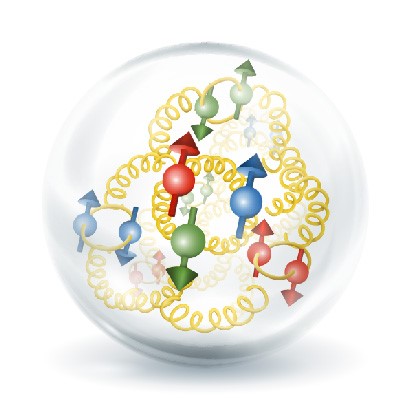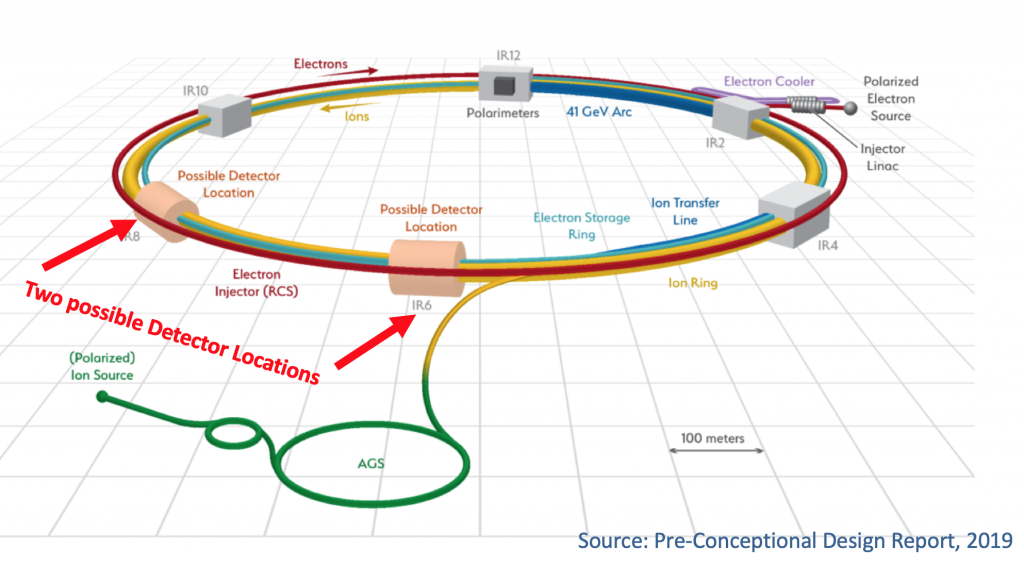Major progress in the theoretical description of the internal structure of the proton and neutron over the last 15-20 years has led to breakthroughs in our understanding of the mechanisms by which their components, the fundamental quarks and gluons, constitute observable matter. In concert with these theoretical realizations, advances in particle-accelerator and experimental-detection technologies, along with dramatic developments in leadership-class computing capabilities and artificial intelligence, such as machine learning and deep learning, have brought us to the threshold of the new science of nuclear femtography. Nuclear femtography will enable a three-dimensional picture of the interior of the proton to emerge.
The challenges posed by leveraging these advances are formidable and exciting. Large amounts of data will need to be analyzed. This analysis will involve reconstruction of physical quantities from the raw data and integration of diverse datasets from experiments across the globe into physical observables that encapsulate the information describing the three-dimensional distributions of quarks inside protons and neutrons.
The production of experimentally determined distribution functions, and their calculation from first-principles theoretical computation, will require leading-edge computation. Machine-learning methods will play a major role in understanding the correlations within the data, in revealing the optimal distributions, and in identifying the importance and impact of future experiments.


Imaging the proton through generalized parton distributions:
Generalized parton distributions (GPDs) provide an important theoretical tool to visualize the proton. In the early days, physicists study the internal structure through form factors (or structure factors), which can be measured through diffractive scattering of the electrons. However, this only provides the static information without understanding of the dynamics. A dynamical information is provided by the momentum distributions of constituents, which give us the snapshots of the proton in momentum space. GPDs are a type of “phase-space” distributions which interpolate between the form factors and momentum distributions, providing the simultaneous pictures of where the constituents are and how much momentum they carry.

Precision Studies for QCD at the Electron Ion Collider:
For over half a century we have known that nucleons are composed of quarks and gluons. We also know that global properties of nucleons and nuclei, such as their mass and spin, and interactions are the consequences of the underlying physics of quarks and gluons, governed by the theory of strong interaction, Quantum-Chromo-Dynamics (QCD). Yet we still do not understand how the properties of nucleons emerge from the fundamental interaction. The US Electron Ion Collider in its low-to-medium center-of-mass energy implementation enables a program of exploration that extends the kinematic reach much beyond the valence quark domain to include the sea of quarks, anti-quarks and gluons. The EIC in its full range of 28 to 140 GeV center-of-mass energy and featuring high luminosity operation will be a powerful facility for the exploration of the most intricate secrets of the strong interaction, and the potential discovery of phenomena not observed before.
PSQ@EIC Final (11/8) White Paper can be found here!
PSQ@EIC Draft (9/19) White Paper can be found here!
High-energy probes of the nuclear femto-structure
A new type of nuclear structure probe is called deeply virtual exclusive processes (DVEPs). One important example of DVEPs is called deeply virtual Compton scattering (DVCS), in which a highly virtual photon scatters on a nuclear system (proton, neutron etc),which then recoils after radiating a high-energy photon. When the real photon is replaced by mesons, we have other DVEPs. In DVEPs, the quark and gluon degrees of freedom in the target are directly responsible for the scattering, which in turn allow for probes of the quark and gluon dynamics in nuclear systems. The recently upgraded 12 GeV Continuous Electron Beam Accelerator Facility at Jefferson Lab and the future Electron-Ion Collider will study the proton and other nuclear systems through this powerful new process.

Large-scale QCD simulations of the proton structure:
Quantum Chromodynamics (QCD) is the fundamental theory of strong interactions. It is a field theory that can be approximated on a four-dimensional Euclidean lattice, allowing researchers to use supercomputers to calculate this theory in lattice QCD. Although many properties of the proton, such as mass and charge distribution can be readily calculated in lattice QCD, its structure as probed by high-energy electron beams cannot be computed on the lattice in a straightforward way. It must be approximated through an additional theoretical formalism, called large-momentum effective theory.

Machine Learning/Artificial Intelligence in Femtography
In Nuclear Femtography, many intermediate steps involve large amounts of data. Using ML/AI techniques in those steps will allow nuclear physicists to obtain results in a timely and resource-saving manner. From simulations of deeply virtual Compton scattering events, to the storage and retrieval of experimental data, to solving the inverse problem of extracting the generalized parton distributions from experiments, to large-scale lattice quantum chromodynamics simulations, ML/AI will provide much needed help.
Mission
The mission of the Center for Nuclear Femtography is to coalesce the expertise in nuclear physics, computational science, mathematics and visualization to establish the world-leading center for three-dimensional imaging of nucleons and nuclei. The center will thereby train the next generation of scientists and technologists, educate students across Virginia, and advance the role of the Commonwealth as a focus for emerging technologies.

Funding
The Center for Nuclear Femtography is funded by the Southeastern Universities Research Association (SURA) under an appropriation from the Commonwealth of Virginia.

